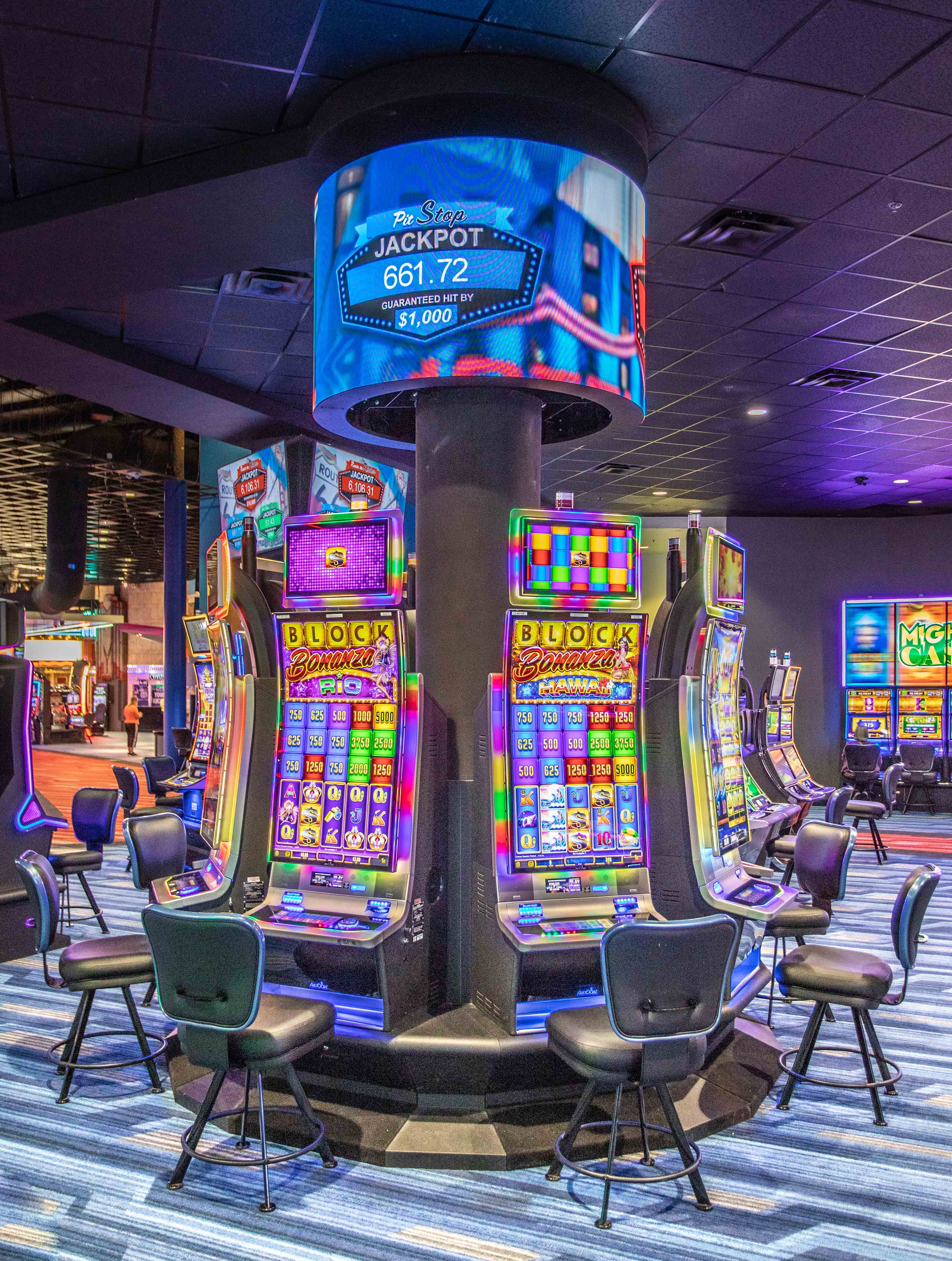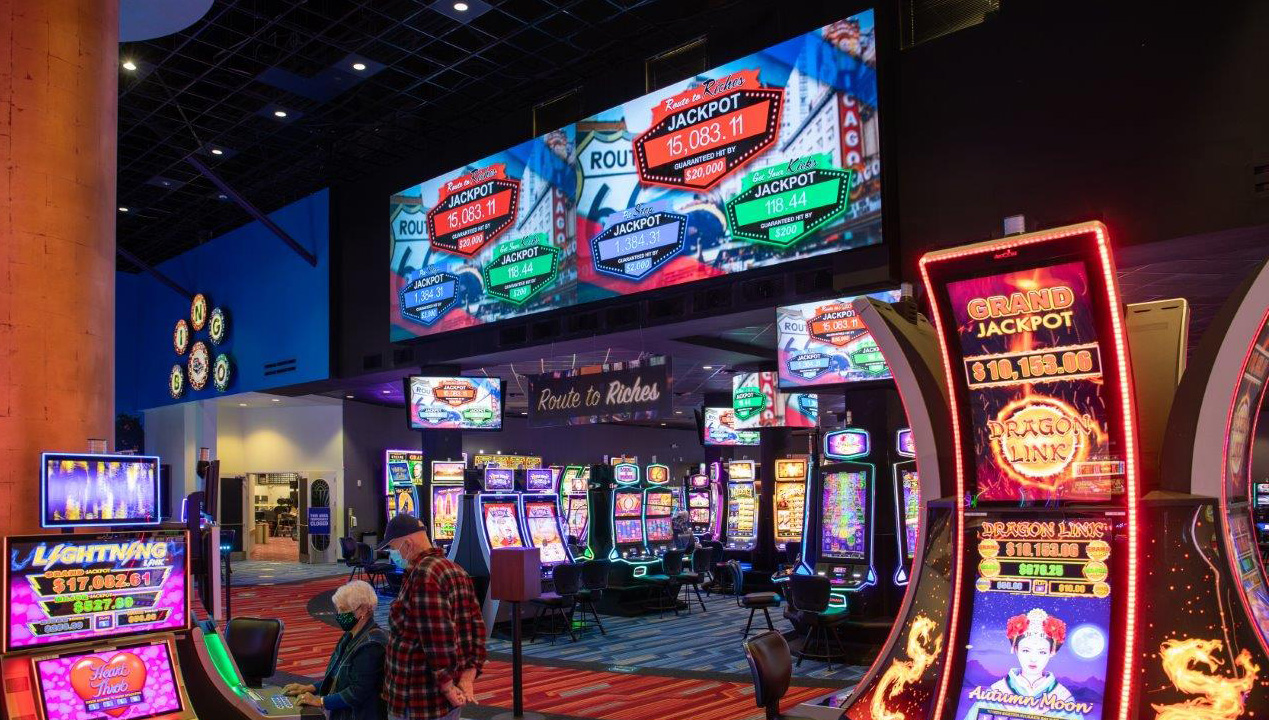Owned and operated by the Laguna Development Corporation (LDC), the Route 66 Casino near Albuquerque, N.M., features table games, a sports book, a poker room, a 500-seat bingo hall, and more than 1,700 slot and video poker machines. The property also comprises a 154-room hotel, a convention center, and a 2,800-seat theater, as well as a sports bar, lounge, and restaurants. As its name suggests, this is a themed facility decorated with Route 66 memorabilia.
[Digital Signage: The Future Is Bright]
LDC celebrated the opening of the Route 66 Casino in 2003, and has since conducted a number of expansions and renovations. Recently, the organization deployed new AV technology in its gaming area with the goal of boosting guest engagement and promoting specific games. Alpha Video & Audio Inc., an AV design and integration firm based in Eden Prairie, MN, led the integration of the new systems.
The ‘Cool’ Factor
Lance Hutchinson, vice president at Alpha Video & Audio, oversees the company’s efforts in the casino market. Prior to these upgrades, his firm installed a digital signage and video distribution system at Route 66 Casino in 2018. Part of this latest effort included converting a night club into a sports bar and sports book.

An old circular bar on the gaming floor was removed, providing space for a new themed gaming area. This new zone—dubbed “Route to Riches”—houses a cluster of progressive slots, whereby a central jackpot increases every time someone plays until someone finally wins. Alpha Video & Audio integrated a 360-degree Planar CarbonLight CLI Flex Series halo LED display above the slots to draw attention to the area.
[Planar Releases New Lifestyle Displays]
“As they redesigned the casino and tore out the bar, they wanted something that could be seen throughout the whole casino—or most of it—and that had some cool factor to it,” Hutchinson explained. “That’s where we came up with the concept for the 360-degree display.”

Following this installation, Route 66 commissioned another project, once again to highlight its “Route to Riches” gaming section. Just outside of the progressive slots area, Hutchinson and his team hung a Planar TVF Series LED video wall measuring 32 feet wide and nine feet high. The 16x8 display, which features a pixel pitch of 2.5mm, is primarily used to run promotional games. However, the LED wall also serves as digital signage, displaying Route 66’s advertising reel, and to showcase sporting events.
[Meet Your AV/IT Manager: Joe Ness, Peppermill Casinos]
After the video wall installation, Alpha Video & Audio replaced the casino’s aging audio technology with a QSC audio system, including 600 loudspeakers (in combination with speakers by Sonance). “All of these projects have grown on top of each other,” Hutchinson noted.
When it comes to LED display technology, Hutchinson noted the advancements that have been made with respect to pixel pitch, which facilitates screen placement in facilities like casinos, where oftentimes viewers are not that far from the display. “The smaller pixel pitches are the biggest thing,” he said. “You can be a lot closer to the display and not see the dots, versus a much higher pitch where the optimal viewing distance is much further back. With a lot of these sports books you can be within 10 feet of the wall, so you want something that’s got a pretty narrow pitch so you’re not seeing the dots on the screen.”
Piece of the Action
Alpha Video & Audio serves more than 1,200 gaming clients across the United States. Even though many projects are executed while these facilities are in operation, Hutchinson said gaining access to them to conduct installs isn’t usually an issue. Some projects require his team to work overnight, but that’s more the exception than the rule. “Working hours are pretty flexible, [although] they do like us to avoid working after three o’clock in the afternoon,” he added.
The biggest challenge in working with gaming clients is more administrative. Because casinos are a highly regulated industry, Hutchinson’s firm must be licensed to serve clients in each state it performs its services—and paperwork needs to be updated on an annual basis. Employees working on site must also undergo comprehensive background checks.
[Opportunities Expand for LED Video Walls]
The rate at which casinos in general adopt AV technology depends on the operator. While some focus on acquiring the latest systems whenever they can, others take a more minimalist approach, according to Hutchinson. Many times, it’s pre-established refresh cycles that determine when a casino will make an upgrade; if a facility is operating on a 10-year cycle, it won’t consider new tech until that much time has passed. Still, a main driver for new AV tech adoption is competition: If a new casino is opening in the same area, an existing operator may wish to re-examine its AV systems in order to provide a more engaging experience to its clientele in hopes of outdoing its competitor.
Sports books, in locations where they are legal, also drive further AV adoption. “Sports betting has opened up some capital opportunities for upgrades to properties, because they can make [AV installations] part of the sports betting initiative,” Hutchinson explained. “They can include the capital for some of these other projects [in the budget for] the sports book. [Sports betting] is not legal everywhere yet, but it is starting to catch on.”
